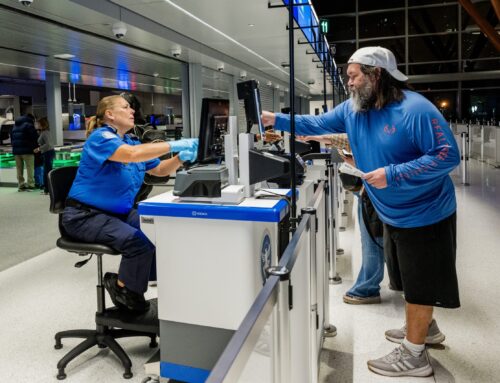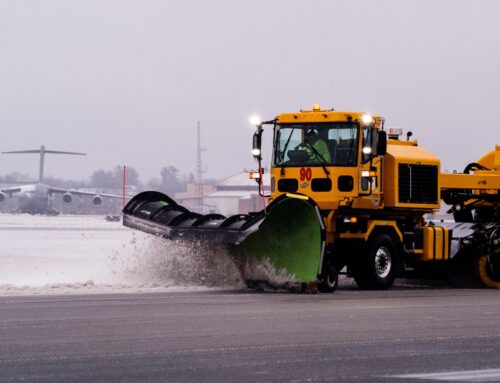TSA Making Changes for Health of Travelers, Staff
Travelers should 'pack smart,' follow new screening procedures to minimize contact with agents
By Natalie Fiorilli
Published June 15, 2020
Read Time: 2 mins
As travelers begin to fly again, they’re likely to notice a few changes at the airport, including how they pass through security checkpoints.
In response to the COVID-19 pandemic, airports and airlines have made adjustments to the security screening process to ensure the safety of travelers and staff. Likewise, Transportation Security Administration officials have announced new procedures for travelers as they pass through airport security checkpoints.
One of the most prominent changes: Travelers are now required to pack carry-on food items inside a separate clear, plastic bag and place it into a bin. The change is intended to minimize the need for agents to handle travelers’ bags, as food can often trigger an alarm.
“This requirement allows social distancing, reduces the TSA officer’s need to touch a person’s container of food and reduces potential for cross-contamination,” TSA officials explained in a statement issued in late May.
The TSA is also emphasizing the importance of travelers packing their bags carefully to avoid bringing prohibited items through the checkpoint, requiring agents to search a carry-on.
TSA officials also are asking passengers to scan their own boarding passes, rather than handing them to an agent place the pass on the scanner.
Other minor changes travelers may notice include:
- Six-foot social distancing guidelines in checkpoint lines
- Face mask requirements (TSA agents will ask travelers to briefly take off their face coverings for identification purposes)
- Fewer security checkpoint lanes as a result of low passenger volumes
In the same statement, TSA Administrator David Pekoske added that the TSA is committed to making changes to the screening process to minimize physical contact between travelers and staff and to enable social distancing guidelines recommended by the Centers for Disease Control and Prevention.
“We continue to evaluate our security measures with an eye toward making smart, timely decisions benefiting health and safety, as well as the traveler experience,” he said.
At Pittsburgh International Airport, the alternate security checkpoint remains closed due to the drop in passenger traffic caused by the pandemic. All travelers and staff are being screened through the airport’s main security checkpoint, located on the Transit level of the Landside Terminal, below Ticketing.
In May, the airport unveiled a new initiative to boost health and safety measures throughout terminal. A key component of the PIT Safe Travels program includes requiring everyone on airport property – officials, travelers and airport staff – to wear a face covering or mask.
Other changes include social distancing guidelines, protective shields and barriers installed in high-traffic areas and reconfigured seating at gates and other areas throughout the terminal. Additionally, the airport continues to conduct frequent deep cleaning routines and is now using UV light to reduce contaminants and provide another layer of sanitation.






